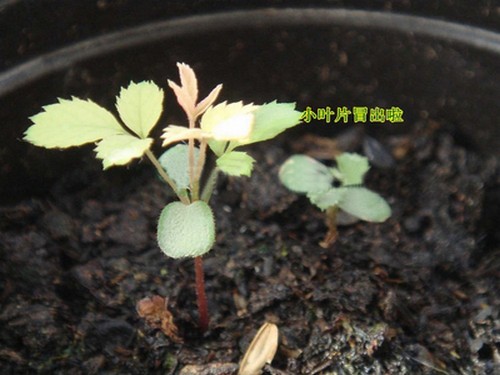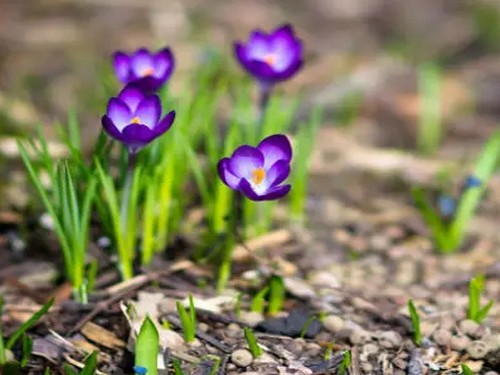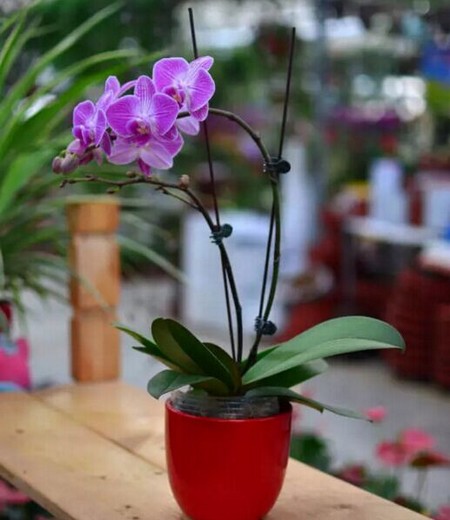Rose seed sowing method
Roses growing from seeds can be challenging because most of the seeds you collect tend not to germinate, no matter how hard you try. Fortunately, most rose plants produce a large number of seeds, so it is usually not necessary to achieve a high success rate.

Prepare to sow:
Dilute the gibberellin with warm water of about 40 degrees (dilute a packet of gibberellin with a disposable cup for 8 minutes) and soak the seeds for about 6 hours; prepare the sown soil in advance, want the soil to be of good quality, and water the finished soil evenly until it is thoroughly watered. After the seeds are sowed, cover the soil, which is about three times the diameter of the seeds. Don't expose the seeds to the sun until they sprout.
Stratification and budding treatment:
Stratification and sprouting treatment is generally suitable in winter, because it requires a low temperature of less than 5 ℃. The rose seeds were soaked in clean water for 48 hours, and then fully mixed with wet sand. The humidity of the sand was clustered by hand, and dispersed as soon as it was released. The ratio of seed to sand was 1 ∶ 3. Finally, the seeds were stratified and germinated in the environment below 5 ℃ for 30 to 50 days. If the temperature in the natural state does not meet the requirements, you can put the mixed seeds and sand in a container and put them in the refrigerator for stratified sprouting.
Sowing method:
The first step: soak the rose seeds in warm water of about 40 degrees, then continue to soak for 4-6 hours after cooling, and remove the seeds. After soaking, the seeds are easy to germinate.
Step 2: put the seeds into the soil (note: the soil needs to be loose, breathable and water-holding). Generally, you can order 5-8 seeds in each container. According to the growth status of the seedlings after germination, leave one strong one, and leave 1-3 seedlings as appropriate after germination. After sowing, the container should be covered with plastic film (convenient bag plastic film is also OK), and several small holes should be pierced in the plastic film to breathe. Put the container in the sun and keep the temperature about 20 degrees. Most seeds can germinate after a week. After germination, wait for the seedlings to thrive and then transplant to the ground, the seeds are placed in the soil about 4~5cm depth, and then watered. Water once a week before sprouting. After germination, it depends on the dry and wet condition of the soil. Water it about every two days, if the sun is not very strong.
After the buds grow up, just bask in the sun for two hours a day, not more.
Post-broadcast management:
Keep the soil moist after sowing, do not often water, do not make the soil stagnant, and there is no need to fertilize the seeds during germination. Seedlings usually begin to emerge in 15 days.
If you still cannot germinate after doing the above, it is probably a problem with the quality of the seed itself.
The sprouting rate of rose seeds is low, so the general sowing soil needs to be loose, breathable and high water holding capacity. The soil commonly used is a mixture of vermiculite, peat, water moss, perlite, serpent sawdust, etc., and it can be configured by itself if there are conditions; it can also be used in general weakly acidic soil without conditions, but there must be no foreign bodies in the soil (such as stone, broken brick, glass, etc.).
Time: 2019-06-11 Click:
- Prev

Propagation method of saffron (saffron)
Saffron, also known as saffron, saffron, is a kind of perennial flower of saffron genus of Iridaceae, and it is also a common spice, perennial herb. Saffron is a bulbous plant and is a rare cold-tolerant variety. The most commonly used method of reproduction is to divide balls, and saffron is divided before flowering from August to September.
- Next

How to propagate Phalaenopsis in potted plants at Home
Phalaenopsis is a tropical epiphytic orchid, known as the laudatory name of the queen of orchids. Racemes with many flowers, flowers in the shape of butterflies, colorful flowers and rich colors, long flowering period, is one of the most widely cultivated and popular species of Orchidaceae, and is loved by people all over the world. As a very important indoor flower
Related
- Fuxing push coffee new agricultural production and marketing class: lack of small-scale processing plants
- Jujube rice field leisure farm deep ploughing Yilan for five years to create a space for organic food and play
- Nongyu Farm-A trial of organic papaya for brave women with advanced technology
- Four points for attention in the prevention and control of diseases and insect pests of edible fungi
- How to add nutrient solution to Edible Fungi
- Is there any good way to control edible fungus mites?
- Open Inoculation Technology of Edible Fungi
- Is there any clever way to use fertilizer for edible fungus in winter?
- What agents are used to kill the pathogens of edible fungi in the mushroom shed?
- Rapid drying of Edible Fungi

